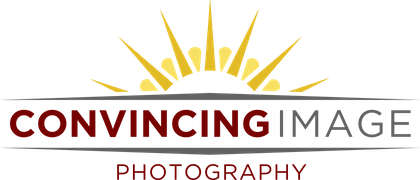SHUTTER SPEED CONTROLS LIGHT AND FREEZES MOTION

Faster shutter speeds are used to freeze motion, while slower shutter speeds blur motion. Sports photographers often shoot at 1/1000 of a second or faster. 1/1000 of a second will freeze the baseball player, but the the bat and ball will still show motion blur. The photograph above was taken with a Nikon D600 and a Nikon 70-200mm f/2.8 at f/4.5, 1/1000 sec, ISO 2500, 200mm. It should be noted that fast flash duration can also be used to freeze motion provided there is little or no ambient light impacting the photograph. Speedlights at 1/2 power usually flash in the neighborhood of 1/1000 of a second and drop down near 1/250 at full power.
Sports are not the only time you have to consider motion freezing shutter speed. When photographing children, the first dance, or anytime your models are not holding perfectly still it’s a consideration. In fact, if you are photographing a breathing human, they are moving. The more movement, the faster your shutter speed should be unless you are intentionally introducing blur.
Flash sync speeds are a limiting factor when it comes to shutter speeds. Without attempting to dive into the the whys behind the limitation, here’s what you must know. DSLR’s (digital single-lens reflex cameras), which are currently produced by major manufactures like Nikon and Canon, have a maximum sync speed, usually somewhere between 1/180 and 1/250 sec. If your shutter speed is not at or below your cameras maximum sync speed, a portion of your photograph or the whole thing will have a big black bar over it. It begins on one edge of your photograph and takes over more of your photograph as your shutter speed gets faster.
Some camera/flash combinations will allow you to use what is called High Speed Sync. This allows you to use somewhat faster shutter speeds, usually around 1/320 sec. However, this is done at the expense of reduced light power/output. Some newer mirrorless camera technology allows for sync speeds up to 1/1000 of a second. While the day may come when mirrorless technology takes over the market from DSLR technology, I don’t think it’s there yet. I’m sure some disagree with me and major market changes may occur sooner than I expect. As for now,the lens offerings and camera technology for mirrorless cameras has not been sufficient to persuade me to make the change.
I usually keep my shutter speed at my maximum sync speed. Portraits are sharper as kids wiggle, teenagers fidget and engaged couples giggle. Normally I only lower my shutter speed from the max sync speed when I’m attempting to bring more ambient light into the frame to brighten the background.
Due to some limitations of sync speed and faster flash durations, shutter speed will normally have no impact on flash. If I lower my shutter speed from 1/200 to 1/125 sec it will not allow more flash to reach my camera’s sensor and/or impact my exposure. It will however, impact any ambient/consistent light in my portrait. If I want to lighten or darken the exposure of a photograph, which is lit only by flash (no ambient light), I will need to do so by adjusting aperture, ISO or flash power/distance.
Making shutter speed adjustments in stop increments is easier than aperture adjustments. If I’m using a particular shutter speed and I want to darken my exposure by one stop, I simply have to double my shutter speed. If I want to brighten my exposure by one stop I divide my shutter speed in half. For example 1/200 sec. is a stop darker than 1/100 sec and 1/400 sec. is a stop lighter than 1/800 sec.
Hand holding your camera vs. using a tripod is the last thing we will consider in regards to shutter speed. How steady are your hands? Slower shutter speeds require you to be more steady or use a tripod, as slow shutter speeds risk introducing camera shake/blur into your photograph. As a general rule I try to keep your shutter speed double the length of the lens im using. If using a 50mm lens, I try to keep my shutter speed at least 1/100 sec and a 100mm lens at 1/200 sec. A mentioned earlier we often shoot a 70-200mm telephoto lens and we often us off camera flash limiting us to a maximum sync speed of 1/200 sec. Thanks to lens technology called “VR” or vibration reduction (Nikon) and “IS” or image stabilization (Canon), lenses can be handheld at slower shutter speeds. I have successfully handheld a 70-200 VR f/2.8 at 1/80 sec. and newer VRII technology is even better. That said, I still prefer to keep my shutter speeds up to reduce/eliminate any motion blur created by subject/model movement.
Conventional “wisdom” would suggest a non VR wide angle lens can be handheld down to 1/60 sec. For lenses longer than 60mm, the shutter speed only needs to equal to the length of the lens for hand holding. For example, a 100mm lens at 1/100 sec. Either people are a lot more steady than I, or I’m over obsessed with sharpness. You simply need to shoot/experiment enough to learn what shutter speeds your comfortable hand holding.
